Review of modular circuit work kit 'little Bits Space Kit' that allows you to experience 'science' with NASA joint development manual

NASA scientists and technology in a module kit '
SPACE KIT|littleBits
https://www.littlebits-jp.com/space-kit
◆ Open
This is the 'little Bits Space Kit' package. The matte package is well made and can be fully utilized as a parts box for storing modules.

When you open the lid and lid, it suddenly appears, 'The astronaut, scientist, inventor, and pioneer you are aiming for. The first step to enter the unexplored land begins here.'

Guidebooks called 'Activity books' are made with the cooperation of NASA scientists and engineers, and this is an important material that should be said to be the real pleasure of Space Kit.

The Japanese version is on the top and the English version is on the bottom. All explanations have been translated into perfect Japanese.
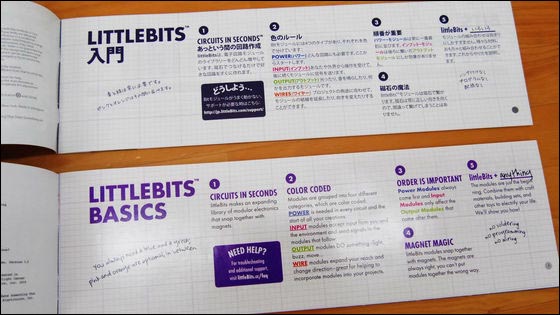
Illustration and character font with a soft impression.
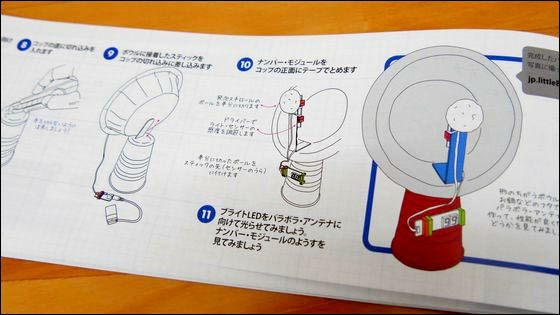
It explains various 'science' in a polite and easy-to-understand manner, and you can grin just by looking at this activity book.
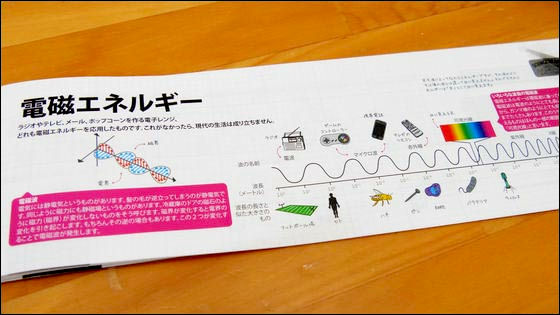
The module parts of the Space Kit were stored in two tiers, like this.
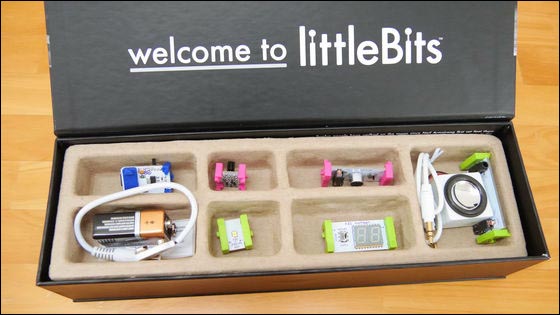
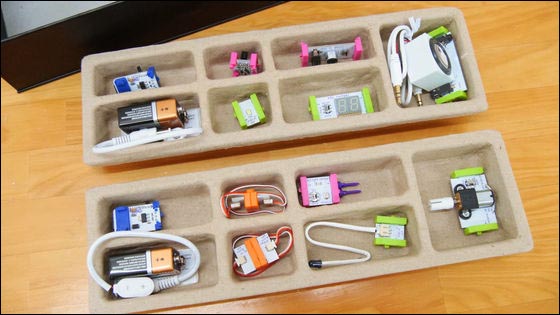
◆ Bit module
・POWER
Bit modules are color-coded according to their function, and blue is a part related to 'POWER'. This is a 'power' module.

It is an essential part that sends electricity to the circuit.
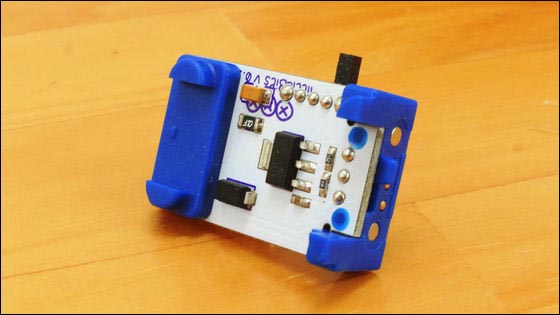
Power is supplied from a 9V battery using a white cable.

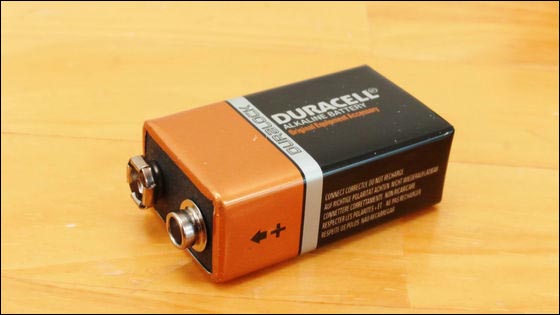
・INPUT
Pink is a module related to 'INPUT'. It receives operations from the outside world and sends signals to the modules that follow it. This is a 'remote trigger' that receives infrared rays such as TV remote control
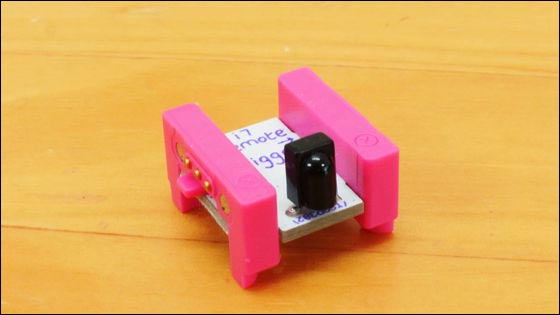
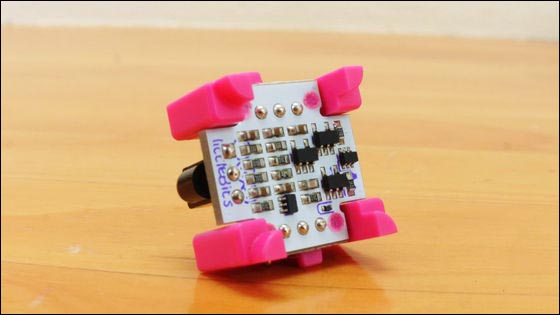
A 'microphone' converts sound into an electrical signal.

This is a 'light sensor' that can measure brightness. It is possible to switch between light mode where the signal becomes stronger as the brightness increases and dark mode where the signal becomes stronger as the brightness gets darker.
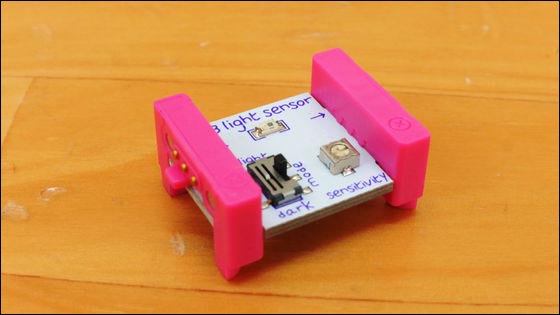
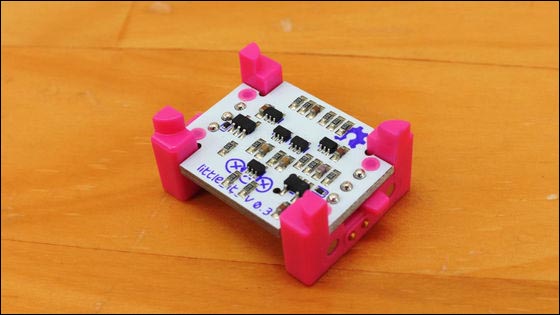
・WIRES
This is a module called 'wire', and as the name implies, it is a distance extension part that can connect modules to each other.
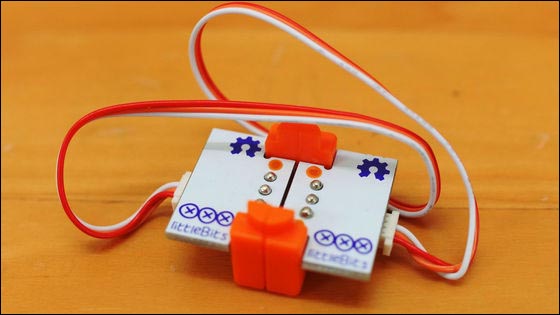
It is a very convenient part because you can easily extend the length of the circuit.
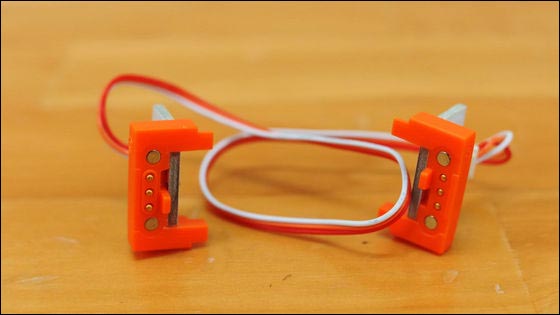
・OUTPUT
The green part is the module related to 'OUTPUT', and it is the part that emits light and sounds. This is a 'bright LED' that turns on the LED light
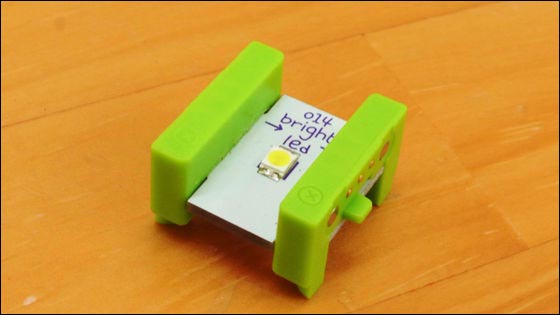
'Number' that can display the signals coming from other modules by digitizing them
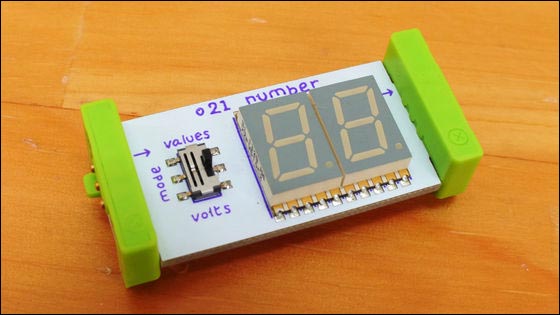
Module 'speaker' that amplifies signals from microphone and mp3 player
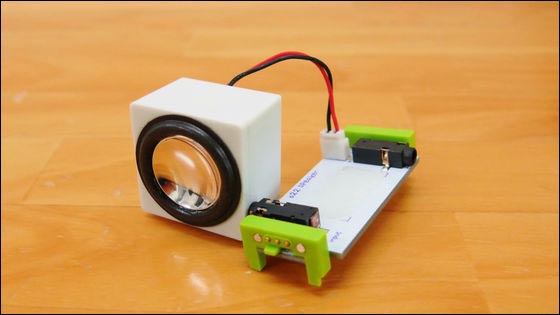
In addition to the input terminal, there is also a headphone terminal, which is convenient when you want to secretly experiment with one person.

'IR LED' is an output module that emits light with a wavelength longer than visible light.
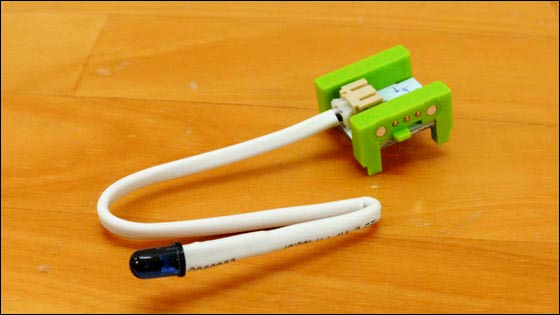
The output light is invisible, but you can see it with a digital camera.
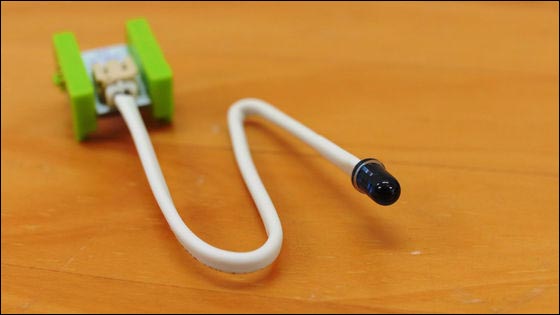
'DC motor' is a part that can rotate the motor when receiving a signal.
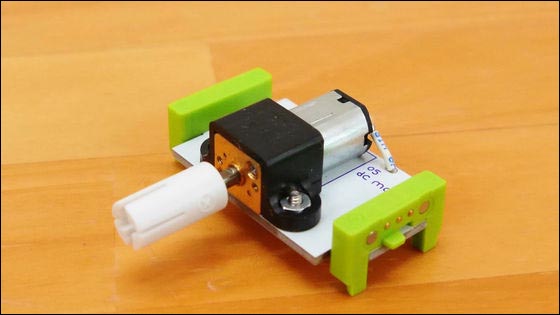
The rotation direction of the motor can also be switched with a switch.
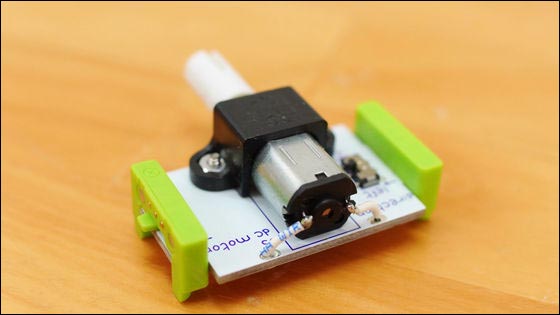
There was also a driver that can operate the module adjustment part called a micro adjuster.
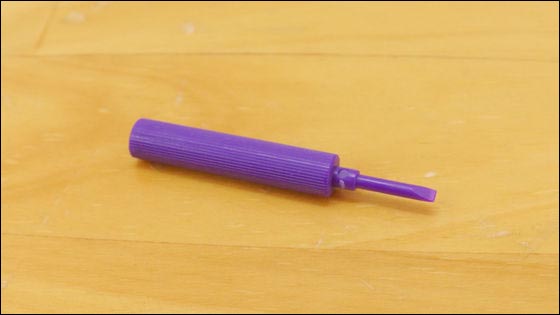
◆ I made a circuit
・Wave generator
Let's create a 'wave generator' circuit using the Space Kit and output music from a smartphone. First, connect a 9V battery to the power.
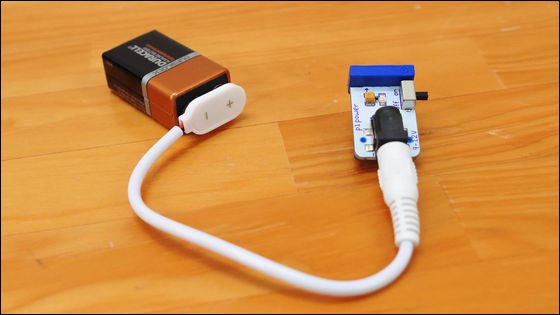
Next, set the wire to power. Although all Bit modules are connected by magnets, the magnets have '+' and '-', so there is no mistake in connecting.
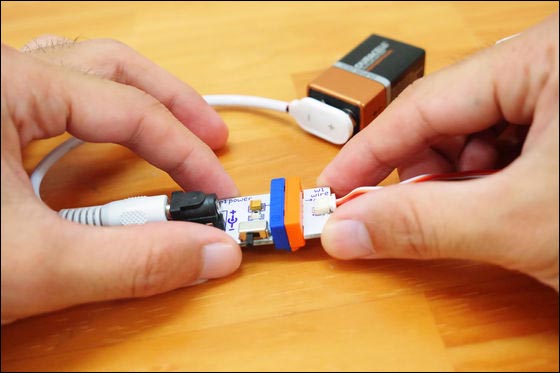
Connect to the speaker with a wire.

You can also connect to your smartphone with a cable.
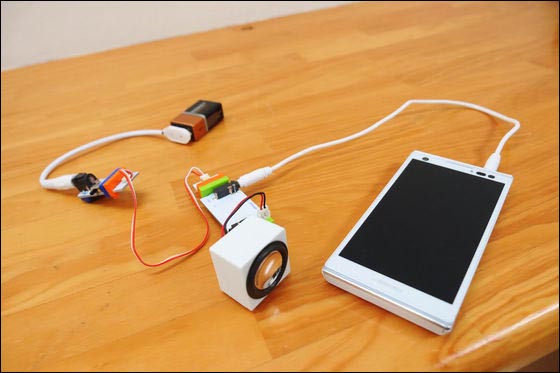
When the power switch is turned on, the red indicator lamp lights up, and the speaker is ready.

You can check how the music of the smartphone is output in the following movie.
Although it is a small speaker, I was able to play music firmly. It is a simple circuit, but from this point it can be intuitively understood that electrical energy has changed to kinetic energy that vibrates the speaker.
In addition, the activity statement states that 'the vibration of the speaker compresses the air in the vicinity, which becomes potential energy (potential energy). The potential energy becomes kinetic energy due to the diffusion of the compressed air. It has changed'. All familiar phenomena are also called 'science'.
・Energy meter
Next, I connected the modules in the order of power → light sensor → number to create a light energy experience circuit called 'energy meter'.
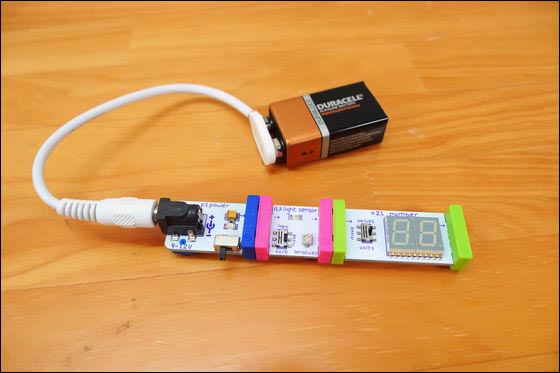
It is like this when visualizing light energy with an energy meter.
It is clear that holding the hand over the light sensor reduces the amount of light, reducing the energy input, and illuminating the smartphone's LED flash increases the energy all at once.
In addition, the activity manual explains that light is 'electromagnetic energy', which is the energy that is transmitted by 'waves', and that digital cameras measure light energy into images. The prototype of NASA's artificial satellite, which takes a picture by measuring the light energy reflected on the surface of the earth, is said to be this energy meter circuit.
・Petite Planetarium
Lastly, I made my own planetarium to learn astronomy with Space Kit. First, prepare a plastic cup.
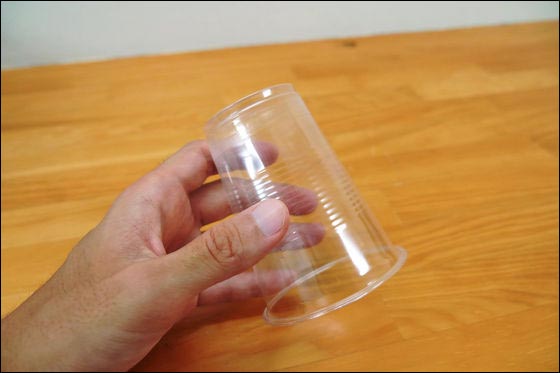
Cut out the bottom part with a cutter knife.
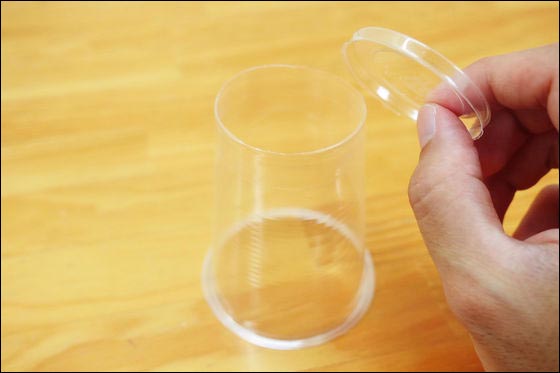
Next, draw a circle on the cardboard using the person with the widened cup.

After cutting, tape it to the widening side.
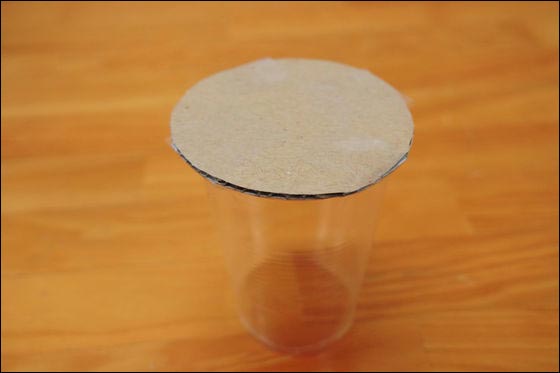
On top of that, fix the bright LED with tape and extend it with a wire.
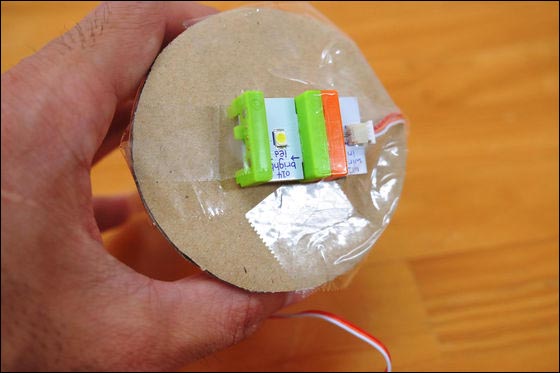
Next, download and print the star map created by NASA from this
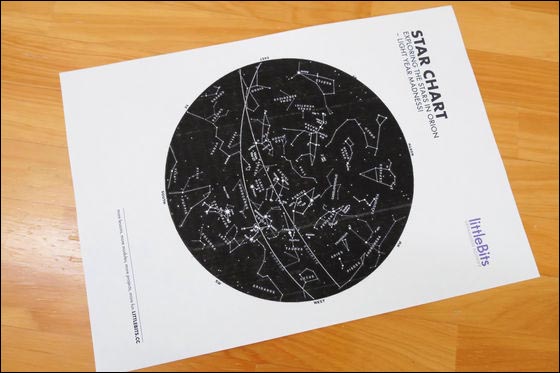
Colored paper obtained at a 100-yen shop...
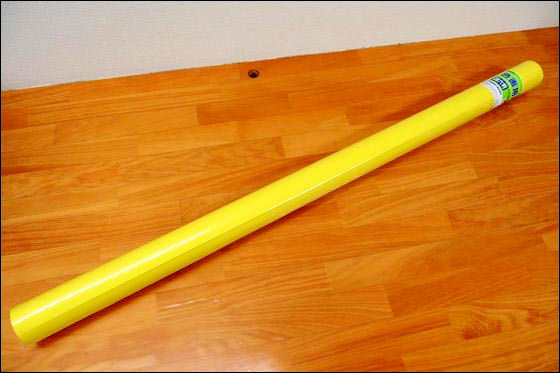
Roll it like a megaphone like this...

Cut it to a size that fits the star chart you printed earlier.
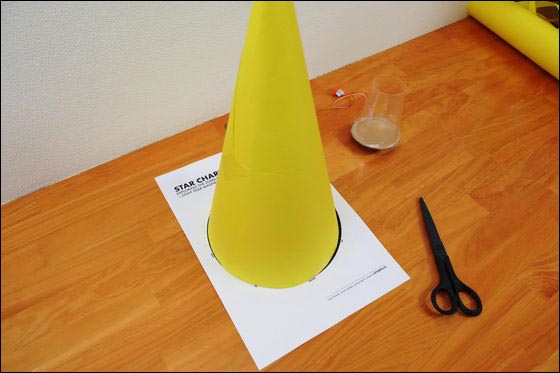
Put a cup in the megaphone and fix it with tape.
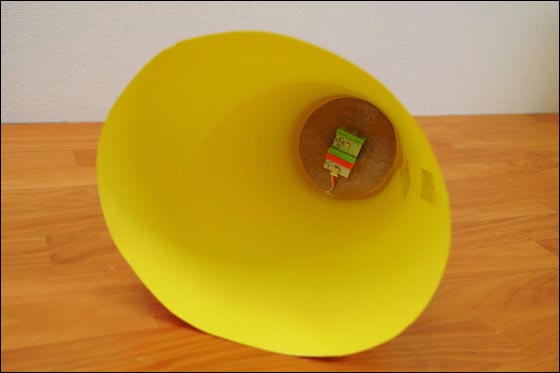
Cut the star map into a circle, and then make a hole at the position of the star.
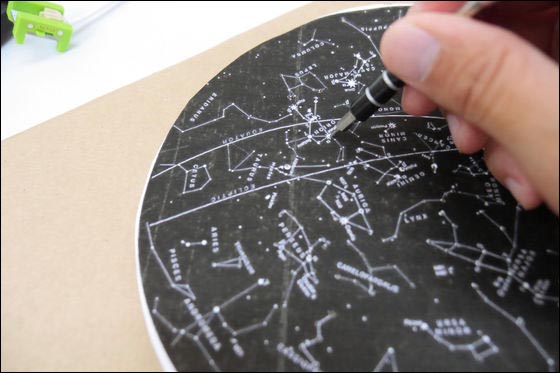
After making a hole, tape it to the megaphone.
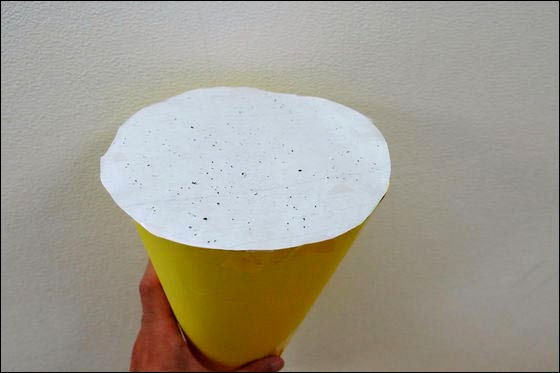
Complete by connecting the light sensor power module to the wire.
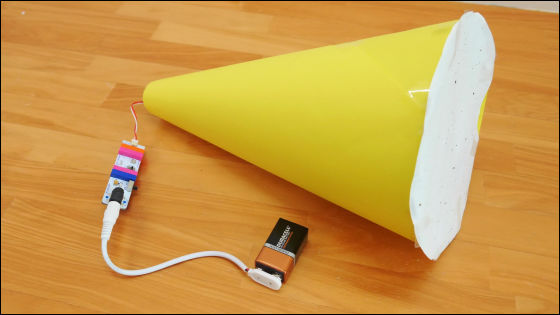
By darkening the room and shining light on the walls, you can reproduce the stars in the night sky like this.
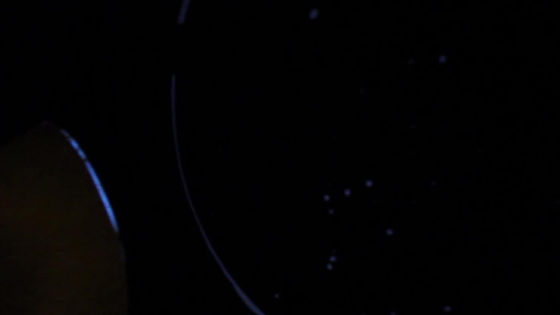
'LittleBits Space Kit' that anyone can easily create an electronic circuit just by connecting modules with a magnet is a chance to experience the familiar 'science' and learn more deeply thanks to the activity book jointly developed with NASA It is a kit that you can enjoy 'science of adults' that will give you.
Of course, the activity book created by NASA has an easy-to-understand and deep explanation + a guide of concrete circuit creation examples, making it a perfect tool for children as well as adults to learn science. The Space Kit, which can also be used as a theme for free research, seems to be the perfect kit for quickly finishing homework while learning science in a fun way.
In addition, 'little Bits Space Kit' is 21,600 yen (with 2160 points) on Amazon.
Amazon.co.jp: littleBits Electronic Circuit Assembly Kit Space Kit Little Bits Space Kit [Domestic Genuine]: Musical Instrument
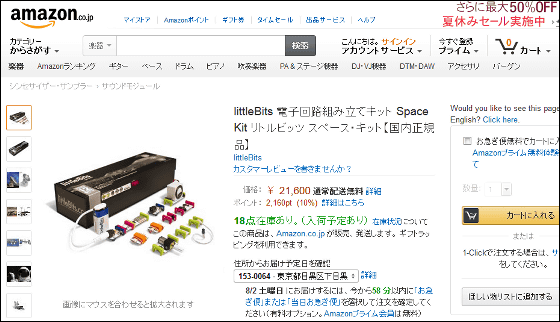
Related Posts:







